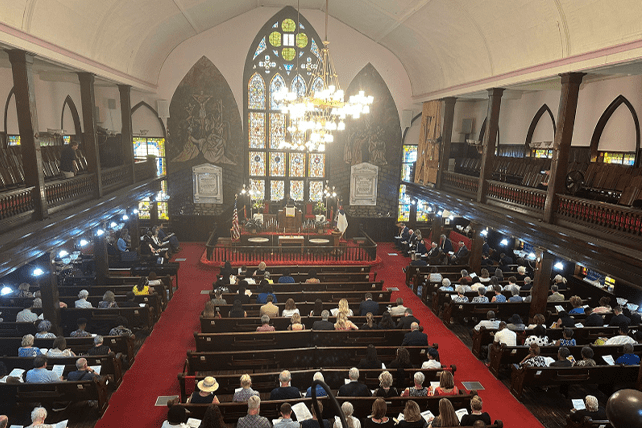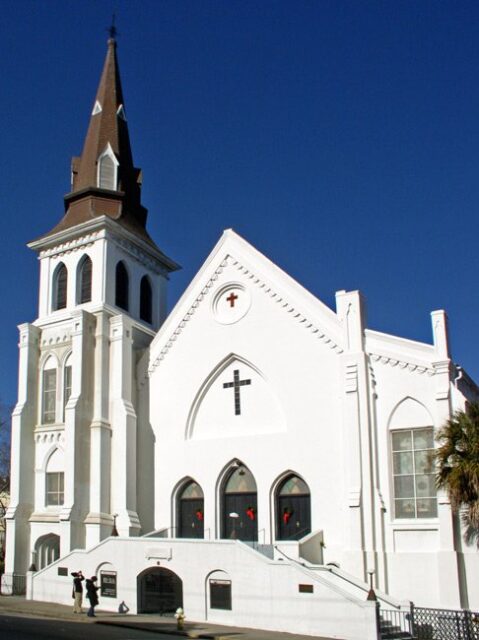You also see Mother Emanuel as a church facing some of the same challenges other historic Black congregations are: aging buildings and congregations. How is it dealing with those realities?
The church really was a church in decline at the time of the shootings. Membership had been dropping steadily for years. Congregation was aging significantly. The biggest impact on both Emanuel and other African American churches in downtown Charleston has been gentrification. Property prices have just skyrocketed. Property taxes have skyrocketed along with it. And Emanuel, which was once very much a neighborhood church that everybody walked to, no longer is, and the members now live often a distant drive. I’m at the church lots of Sundays, and the altar call often goes unanswered. Nobody walks up (the aisle to join). The church also has real physical problems, structural problems. A study a number of years ago, when Rev. Pinckney was the pastor, discovered substantial water damage and termite damage, costing millions of dollars to repair. They’re in the middle of a two-phase campaign to raise the money to do those repairs.
The book reflects memories of relatives and other survivors of the massacre. How would you sum up what you learned about them and Emanuel in particular?
I found a congregation that remains deeply faithful and deeply committed to its traditions. The fellowship hall (the site of the shootings) is still used on a daily basis for meetings and classes. There’s an ongoing tension between the imperative to remember and to commemorate and the desire both to go back to a more innocent time before this happened, when the church was just their church, and also to move ahead and to try to progress and move the church forward.
Exterior of Mother Emanuel African Methodist Episcopal Church in Charleston, S.C. Photo courtesy of Mother Emanuel AME Church
You note that members of Mother Emanuel had “every reason to be wary of white people.” Were there times when people were concerned about your presence?
There’s a story that a couple of guys who are now close friends of mine tell — they’re trustees of the church — about one of the first Sundays when I visited, and I was up in the gallery (balcony) watching the service. They’re in the choir loft, and they see that I’ve got a black canvas work bag just large enough to conceal a weapon, and they kind of watch me open it up, and they breathe a sigh of relief when they see that I only pull out a laptop. And I get that. Who can blame them?
Do you have any religious affiliation?
I’m Jewish. So I understood, from the get-go, how much I had to learn and how much I was going to get wrong along the way, and maybe most importantly, how much I could not experience or feel the events I was writing about in the way that the members of this congregation could. On the other hand, I’m a journalist, and this is what we do. We go into unfamiliar territory and try to master the subject matter in a way that we can report back on it to our constituents.
It took me 10 years to feel that I had what it took to write this book, a couple hundred interviews and a lot of reading and a lot of thinking and very careful writing, but I sort of felt like the only way I can compensate is by putting in the work. And I hope that I have.
This article originally appeared here.


